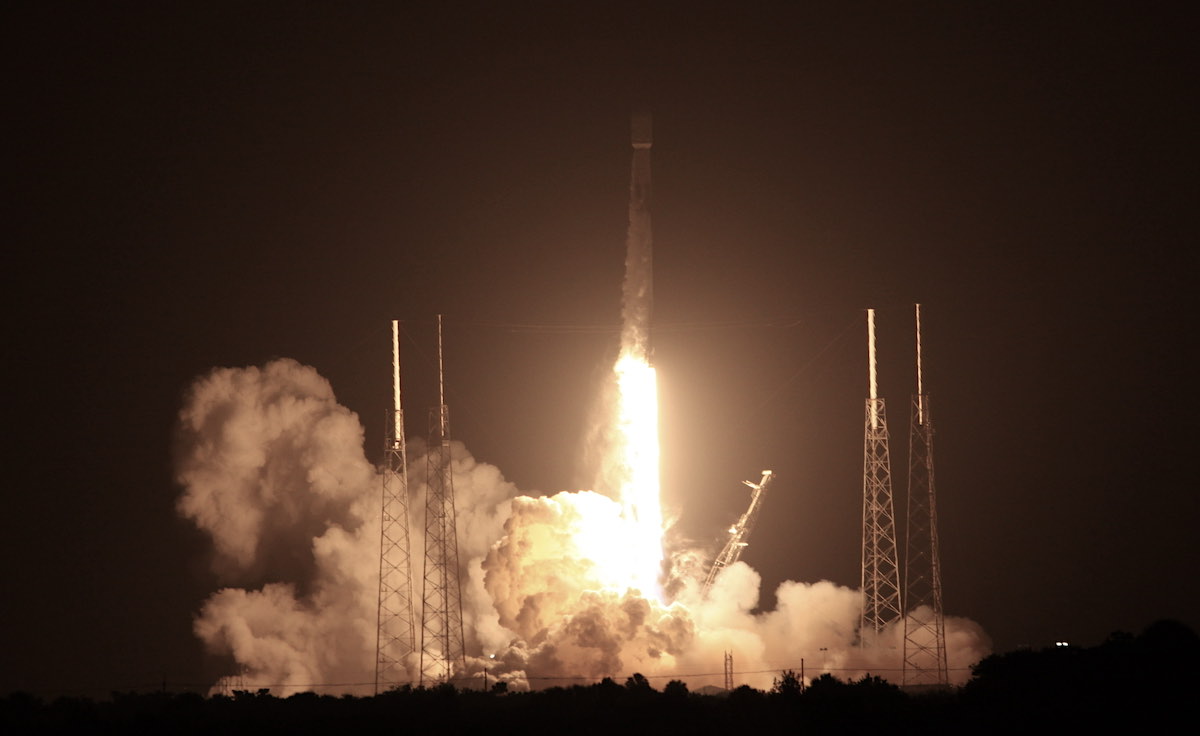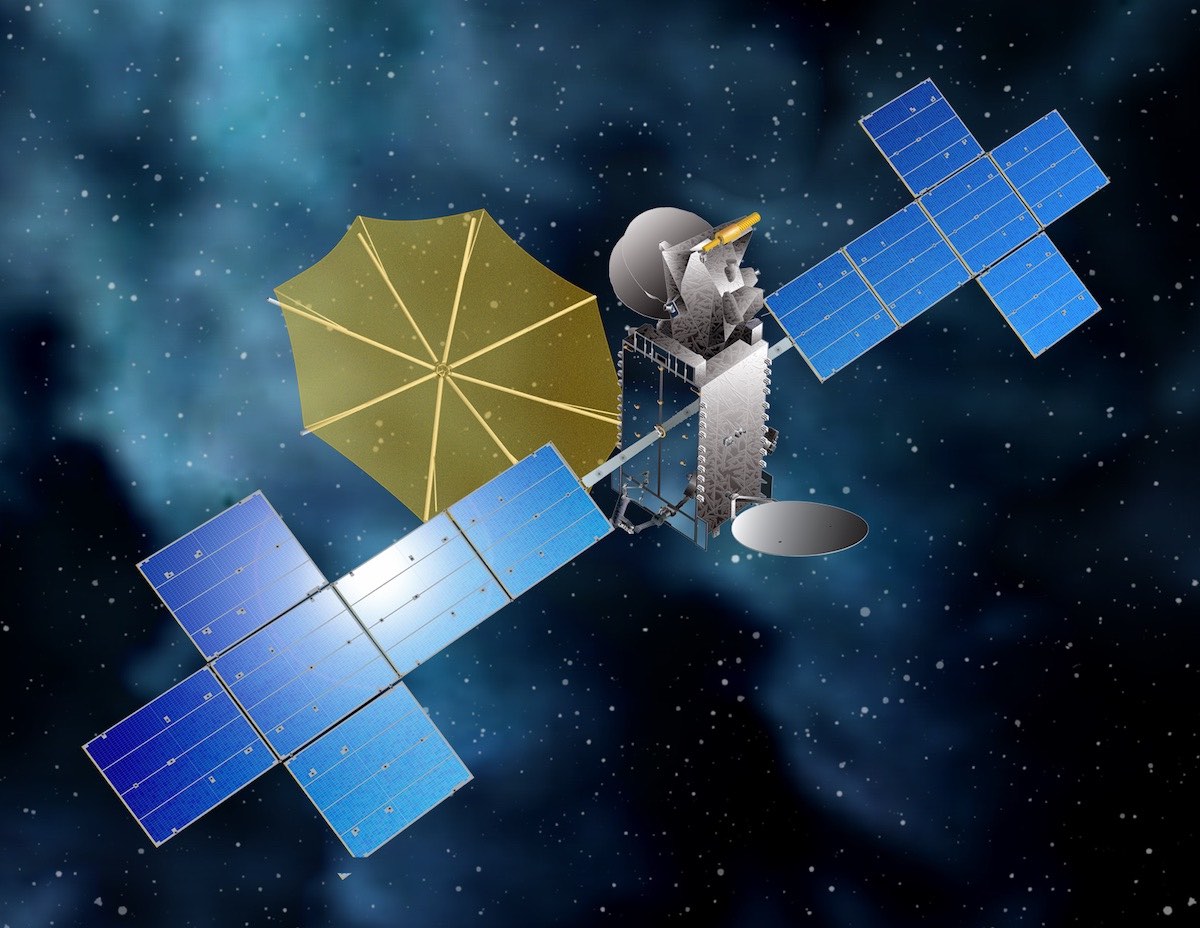
A Falcon 9 rocket launched from Cape Canaveral early Sunday with a high-power digital radio satellite for SiriusXM, marking SpaceX’s 18th Falcon 9 flight since Jan. 1, but just the third dedicated to external commercial customers in a year dominated by missions building out the company’s own Starlink internet network.
It was the eighth Falcon 9 launch in the last 44 days. The busy stretch of SpaceX missions since Jan. 1 has been dominated by launches deploying the company’s own Starlink internet satellites.
So far this year, SpaceX is on a pace to break the annual record for the most orbital flights by any U.S. launch provider, but the SXM 8 mission was just SpaceX’s third flight of 2021 to devoted to deploying commercial payloads from other companies.
The Turkish Turksat 5A satellite launched Jan. 7 on SpaceX’s first mission of the year, and a Falcon 9 rideshare mission Jan. 24 carried 143 small satellites into orbit. Most of the 143 spacecraft came from commercial satellite operators.
Thirteen Falcon 9 missions this year have launched Starlink internet satellites as primary payloads. The missions completed the first stage of deployment of SpaceX’s global broadband network, giving the company more than 1,600 active satellites, more than any other operator.
SpaceX has also launched two Falcon 9 rockets under contract to NASA, including an April 23 launch that ferried four astronauts to the International Space Station. Another Falcon 9 took off Thursday with a Dragon cargo capsule hauling supplies and experiments to the space station.
The SXM 8 radio broadcasting satellite was also just the second geostationary communications payload launched by SpaceX year. Once dominated by heavy communications platforms, the commercial satellite and launch markets are shifting to servicing fleets of numerous smaller spacecraft, like the Starlink constellation.
Powered by nine Merlin main engines, the 229-foot-tall (70-meter) Falcon 9 rocket and the SXM 8 spacecraft climbed through an overcast sky after lifting off at 12:26 a.m. EDT (0426 GMT) Sunday from pad 40 at Cape Canaveral Space Force Station in Florida.
Liftoff of SpaceX’s Falcon 9 rocket on a mission to replenish SiriusXM’s satellite radio network. https://t.co/EgKWgezxwK pic.twitter.com/cU4mvWZQSk
— Spaceflight Now (@SpaceflightNow) June 6, 2021
The Falcon 9 steered east from Florida’s Space Coast on a trajectory to boost SiriusXM’s SXM 8 radio broadcasting satellite toward its operational equatorial orbit.
The first stage’s Merlin 1D engines shut down about two-and-a-half minutes after liftoff. The booster separated from the Falcon 9’s upper stage a few seconds later.
While the second stage’s single Merlin engine accelerated the SXM 8 satellite into orbit, the 15-story booster stage nailed its landing on a SpaceX drone ship in the Atlantic Ocean after a supersonic descent back through the atmosphere.
The first stage’s successful landing ended the booster’s third mission to space and back, following launches last November and in April, each carrying astronauts aboard SpaceX Crew Dragon spaceships heading to the International Space Station.
The Falcon 9’s second stage reignited about 26 minutes into the mission to propel the SXM 8 satellite into an elongated transfer orbit stretching to an apogee, or high point, more than 12,000 miles (about 20,000 kilometers) above Earth.
The mission concluded with an on-target deployment of the SXM 8 satellite nearly 32 minutes after liftoff. Video from a camera on-board the Falcon 9 rocket showed the roughly 7.5-ton (nearly 7-metric ton)spacecraft, built by Maxar Technologies, separating in sunlight over Africa.
SXM 8 separation confirmed.
SiriusXM’s new satellite — built by Maxar with a fueled mass of nearly 7 metric tons — deployed from SpaceX’s Falcon 9 rocket to begin a mission beaming radio programming across the United States, Canada, and the Caribbean.https://t.co/EgKWgezxwK pic.twitter.com/ppHls7eBVq
— Spaceflight Now (@SpaceflightNow) June 6, 2021
The 27-foot-tall (8-meter) satellite is expected to unfurl solar panels and fire its own engine to circularize its orbit at geostationary altitude more than 22,000 miles (nearly 36,000 kilometers) over the equator in the next few weeks. The spacecraft will undergo testing before commencing commercial service for SiriusXM.
SXM 8 is the second spacecraft in a two-satellite order placed by SiriusXM in 2016. The first satellite, SXM 7, successfully launched last December on a Falcon 9 rocket but suffered a payload failure before entering service.
SiriusXM confirmed the failure of “certain SXM 7 payload units” in January, following orbit-raising maneuvers to reach geostationary orbit.
In a quarterly earnings report in April, SiriusXM said it recorded a $220 million impairment charge from the failure of the SXM 7 mission after declaring the satellite a total loss. SiriusXM said it has a $225 million insurance covering the launch and first year of in-orbit operations of the SXM 7 satellite, and the company said it expects to file a claim under the policy.
Sean Sullivan, executive vice president and chief financial officer at SiriusXM, said the company has issued a request for proposals to satellite manufacturers to build a replacement for SXM 7.
Maxar said in May that the SXM 7 failure registered a $28 million impact on its financial statement, including $25 million from lost payments from SiriusXM that were due if the spacecraft successfully commenced operations. Maxar spent another $3 million attempting to repair and recover the satellite.
SiriusXM said it does not expect its satellite radio service to be affected by the SXM 7 failure.
SXM 7 was expected to replace the XM 3 radio broadcasting satellite at 85 degrees west longitude, officials said last year. The Boeing-built XM 3 satellite launched in 2005 aboard a Sea Launch Zenit 3SL rocket.
SiriusXM said its XM 3 and XM 4 satellites remain operational in geosynchronous orbit and can continue providing radio broadcast services for several years. Another satellite, XM 5, is available as an in-orbit spare.

SXM 8 was originally supposed to replace XM 4, but SiriusXM has not confirmed whether it changed the satellite’s deployment plan after the failure of SXM 7. Officials have also not said what, if any, modifications Maxar made to SXM 8 to eliminate the risk of a similar failure as the one that struck SXM 7.
Based on Maxar’s 1300-series spacecraft design, the SXM 7 and SXM 8 satellites have large deployable S-band antennas made by L3Harris to broadcast radio signals to SiriusXM’s customers. The S-band reflector is required for the satellite to beam high-power signals to users with small terminals on the ground, such as satellite radio receivers on cars.
“Maxar and SiriusXM have a decades-long relationship, and we’re thrilled to deliver the ninth satellite we’ve built for them since 2000,” said Paul Estey, Maxar’s executive vice president for space programs delivery. “SXM-8, built on Maxar’s proven 1300-class bus, is more than twice as big and powerful as the first-generation SiriusXM constellation built by Maxar.”
SpaceX’s next launch is scheduled for June 17 from Cape Canaveral with the U.S. Space Force’s next GPS navigation satellite.
Email the author.
Follow Stephen Clark on Twitter: @StephenClark1.
